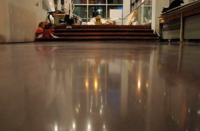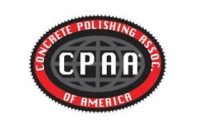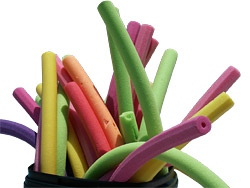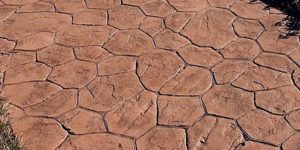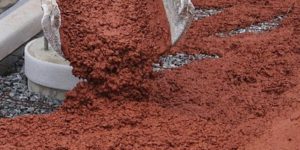We are always looking for a way to make our jobs easier without losing quality. To increase productivity, it is imperative that we all strive to work smarter, not harder. With this in mind, we have compiled some expert’s tips and tricks on how to use household items to take your concrete up a notch. These tips and tricks are sure to make your decorative concrete work easier and more beautiful.
Use ice to introduce water into a wet-grind application
When you are wet-grinding a very hard concrete floor, the water reduces surface tension and flushes fine particles to the surface, where they act as a secondary abrasive. You can use ice to introduce the water slowly, helping it penetrate into the slab. Using ice will eliminate water splashes onto walls or finished surfaces and reduce the amount of slurry otherwise generated in a full wet cut. And it can be placed several thousand feet ahead of the primary work area. Ice is cheap and is a great resource on jobs that do not have a water hookup.
Use pool noodles as backer rods
Your kid’s pool noodles are a great alternative to backer rods. You can pick them up at any dollar store, usually year-round. Theses noodles can be very easily cut into custom strips for odd and awkward joints. They will stand up to polyurea and epoxy, and the small holes in the Styrofoam swim noodle happen to be a great cell size for absorbing the material. This will help the noodle grab the material and stay in the joint through expansion and contraction.
Cleaning small oil spots on new and polished concrete
If you develop a deep oil spot on newly poured or polished concrete, you can use brake cleaner to remove it. Brake cleaner leaves little to no residue after the initial treatment. It is very easy to use and evaporates very quickly. WD-40 can help with a deep oil stain as well, but it leaves a heavier residue behind. Both products can be spot-cleaned using a solution of a little water and vinegar or ammonia.
Cleaning large oil spots on new and polished concrete
If you develop large oil, transmission or hydraulic fluid stains, use kitty litter and a natural acidic cleaner to remove them. Mix the kitty litter with the acidic cleaner to the point of saturation. Once mixed, take the mixture and spread across the stain. The mixture should measure about 1/2-inch thick. Using a 6 mil poly, cover the spread. Now take blue or green painting tape and tape the perimeter so no air can get in and dry the spread out. Leave it covered for a minimum of 48 hours, making sure the spread is still moist. After you remove the patch, use a floor scrubber and thoroughly clean the area.
Edging very hard concrete edges
It you have a tough concrete slab with very hard edges, take a little spray bottle and spray some water in front of the edge grinder. The water will capture debris and help the diamond tools cut. The result acts like a cutting slurry paste used in other abrasive industries. It will also help you remove cure-and-seal, light coatings and adhesives.
You can also sprinkle a little play sand as a secondary abrasive if needed. Be careful not to use too much water because it could compromise your vacuum filters. The speed and friction of your abrasives should dry the debris before it reaches the filters.
